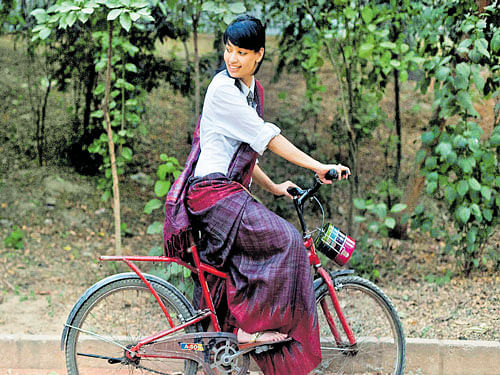With each lap the Industrial Revolution makes, the lines between machine and human wear thin. A once respected artisan morphs into a labourer and then, an operator. Soon, only wisps of a human touch will remain.
But Gunjan Jain, a designer at ‘Vriksh’, an alternate design studio that works solely with handloom weavers and natural materials of Odisha, doesn’t think it’s time yet for such a disappearing act.
In an effort to explore and revive the rich textile tradition of Odisha, she is touring the country, talking about the different fabrics and weaves of the state. The discussion, titled ‘Odisha — Beyond Ikat’, elaborates on the numerous handloom techniques that exist within Odisha.
“Odisha is a unique state where almost every district offers a different type of handloom. So, this talk and exhibition are an attempt to share the treasure trove of the state’s textile industry, beyond Sambalpuri ikats,” she says.
In mainstream thought, Odisha is associated with Sambalpuri ikats but there are many more weaves, like bomkai and jala tussar silks, that are just as beautiful.
“There’s this notion, especially outside the state, that Odisha textile means Sambalpuri ikat, but that’s only one part of it. In my talk, I’ll be mapping the textile areas and their historical and cultural significance.”
Gunjan says that these weaves and fabrics are popular not just because they are beautiful, but also for their cultural roots.
“Take for example, the tussar belt in coastal Odisha — motifs like the fish are popular here because it’s an important part of their lives.” But when she first entered the textile scene in 2007, she found that, “Most weavers were making plain yardages, whereas they had a very unique skill — jala weaving — because that’s what the market wanted. For a while, the market had even forgotten jala weaving.” But with some encouragement, even weavers who had left the business came back to the art.
“One of the reasons for this coming back is dignity — aside from better wages and recognition, they have also been instilled with confidence and dignity. They need to know that they aren’t just labourers but also artists,” explains Gunjan.
On the role of technology in the lives of these weavers, Gunjan says that it is potentially ‘detrimental’. This is why she emphasises on the importance of the Handloom Reservation Act. Initially, 22 products were reserved for the handloom sector but now, only 11 are left.
Power loom lobbyists want to de-reserve saris as well now.” She adds, “Many have foreseen how detrimental technology can be to weavers. About 70 per cent of handloom products are actually made from a power loom. So though there is a potential demand for handlooms, it is being overshadowed by machine fabrics which sell themselves as handmade products. Also, 60 per cent of the designs and patterns on mass-produced works are taken from handloom products.”
While ‘Vriksh’ tries to popularise handwoven works, it doesn’t stray away from contemporary styles. It reinterprets contemporary designs so that it doesn’t kill the cultural aspect of a trade.
Gunjan Jain will present ‘Vriksh’s collection of Odisha textiles and give a talk titled ‘Odisha — Beyond Ikat’ at ‘Basava’ from January 22 to 25.
